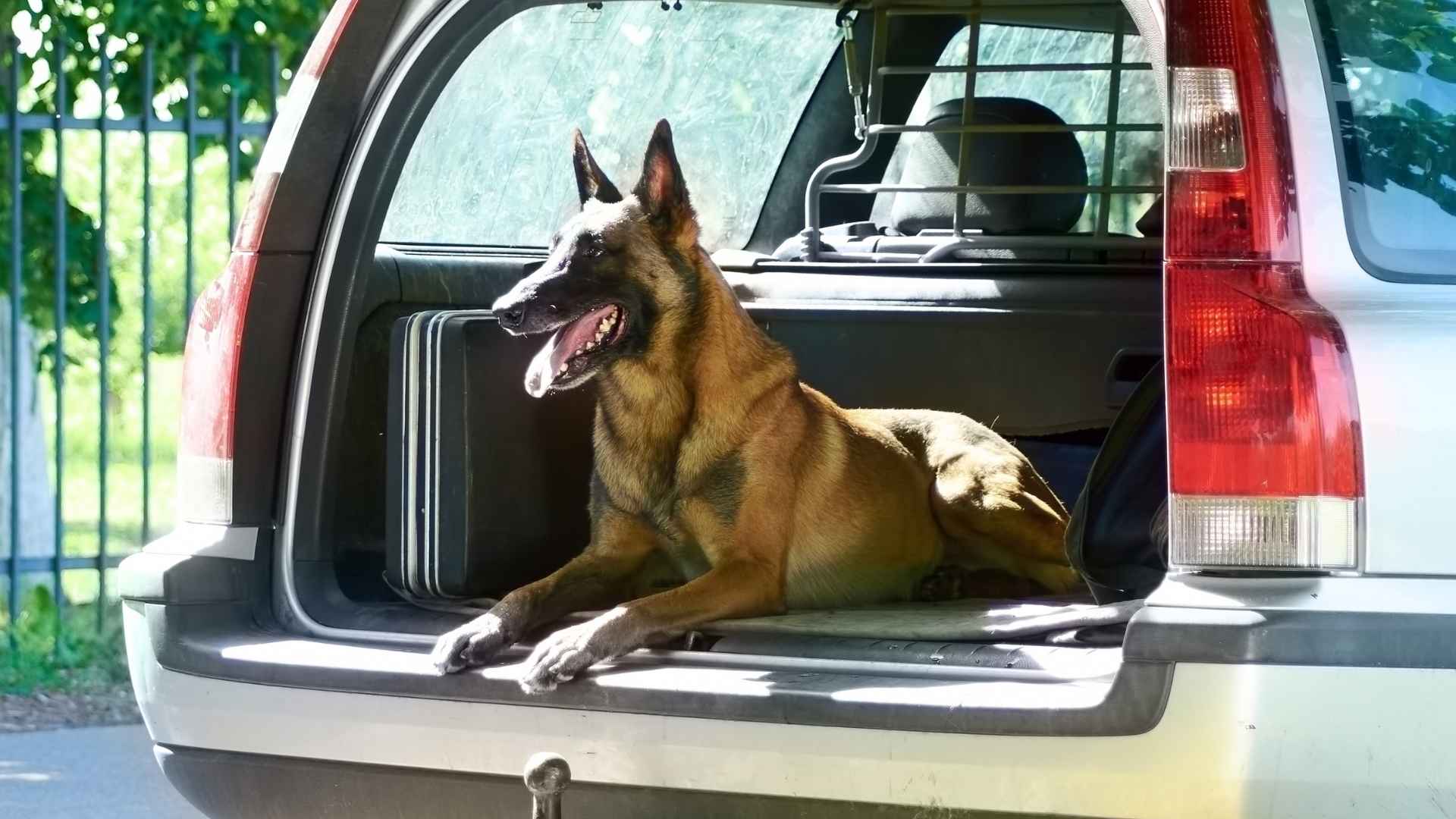Some dogs were shaped by centuries of careful breeding to do more than sit at their owner’s feet. They were bred to step between danger and what they love most.
These dogs don’t hesitate when someone approaches their space, their people, or even their car—they position themselves like a living barrier. Their instincts come from farms, war zones, and estates where guarding was not an occasional behavior but a daily expectation.
Today, that instinct still runs deep. When a stranger steps too close to a car window or gate, these breeds don’t need to be asked to block the path; they just do it. Their loyalty, physical presence, and keen awareness make them natural guardians in modern life.
Dog Breeds That Block Strangers From Touching Cars
1. German Shepherd
The German Shepherd was developed in late‑19th‑century Germany by Captain Max von Stephanitz, who wanted a dog with intelligence, athleticism, and a steady temperament. As per Britannica, it was first used for herding but quickly became a leading choice for military and police work.
These dogs are attentive to their surroundings. They register footsteps on gravel, changes in tone, and the movement of people near the property without showing nervousness. Their focus allows them to react quickly when needed.
Training is straightforward because of their ability to learn commands quickly. They require structure and regular practice to keep their skills sharp. Without that direction, they can become overly protective or restless.
The breed’s coat is a double layer that protects against wind and rain. It sheds year‑round and in heavier cycles twice a year, so regular brushing is necessary.
They stand tall and balanced, with a frame built for stamina and a natural posture that signals awareness.
Fun Fact
German Shepherds were among the first guide dogs for the blind, demonstrating their versatility early in the breed’s history.
2. Rottweiler
The Rottweiler’s history begins with Roman drover dogs that moved livestock for the army. Over time, the breed took root in the German town of Rottweil, where it guarded cattle, pulled carts, and protected merchants’ money on long journeys.
Rottweilers are calm and deliberate in how they observe their environment. They tend to position themselves between what they consider valuable and anyone approaching. Their confidence often comes through in stillness rather than noise.
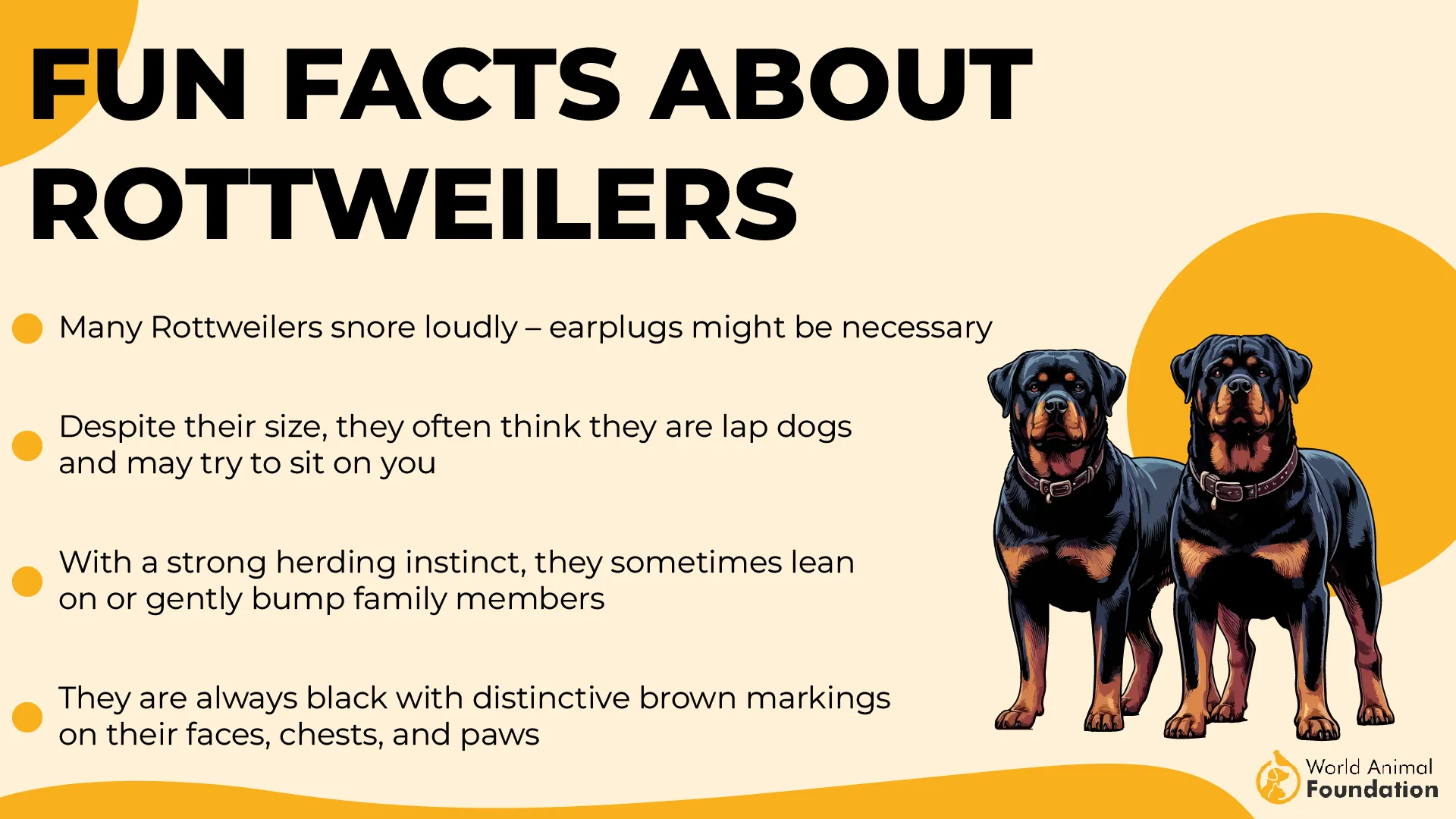
They respond well to consistent training and clear rules. Their intelligence makes them fast learners, but they do best when boundaries are reinforced daily. When those boundaries are missing, they begin to make their own decisions.
Their short black coat with rust markings is easy to care for and only needs brushing a few times a week. Shedding is steady, and owners usually notice loose hairs year‑round.
A strong, compact frame gives them weight and authority, and their physical presence alone is often enough to deter unwanted attention.
Fun Fact:
Rottweilers were once nicknamed “butcher’s dogs” for guarding money pouches tied to their collars as they worked with livestock traders.
3. Cane Corso
The Cane Corso descends from large Roman mastiffs once used in war. In rural Italy, the breed evolved into a multipurpose farm dog, guarding property, driving livestock, and hunting large game.
They are watchful and deliberate. Cane Corsos tend to stay close to their owners and react quickly when they see someone approach a gate, yard, or vehicle.
AKC notes that these dogs benefit from early, steady training. They respect handlers who are consistent and clear, and they become unsettled when they are handled harshly or given no direction.
The coat is short and sleek, typically black, gray, or fawn. A quick weekly brushing is enough to manage shedding and keep the coat looking healthy.
Their large frame and square build give them a commanding stance, and their presence is often enough to make strangers hesitate before moving closer.
Fun Fact
The name Cane Corso comes from the Latin word cohors, which translates to “guardian of the courtyard.”
4. Bullmastiff
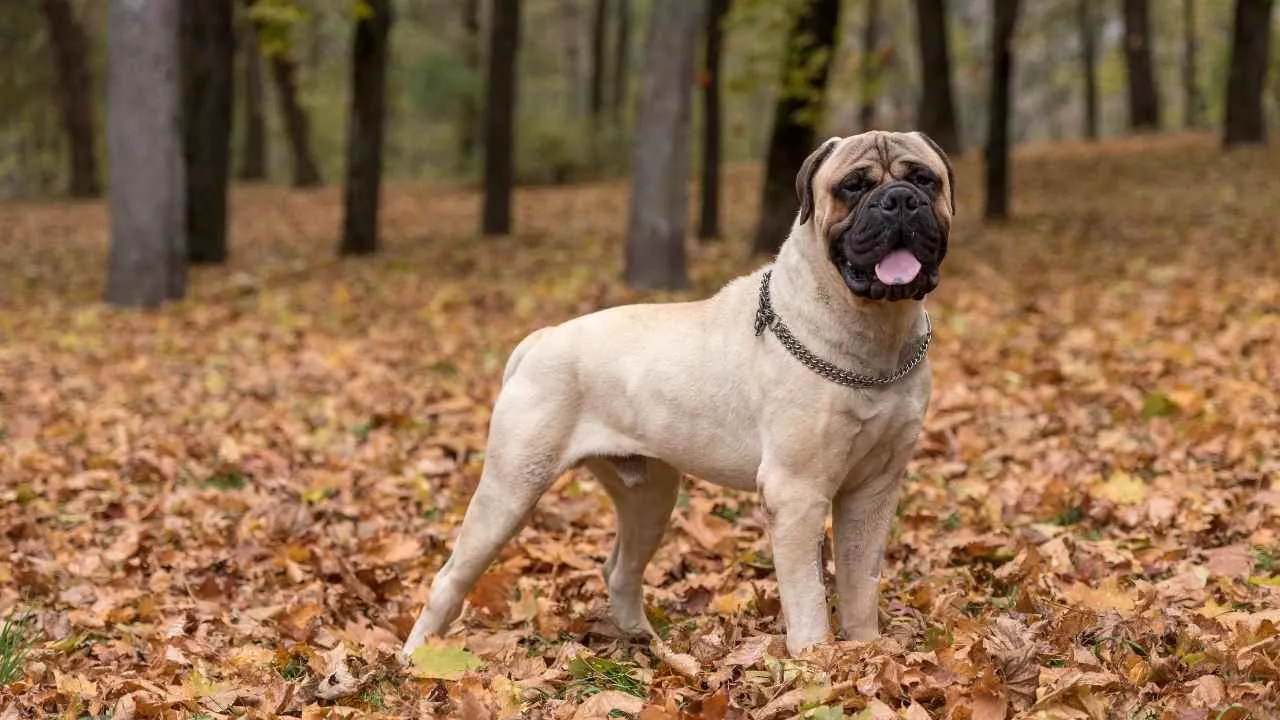
The Bullmastiff was developed in 19th‑century England to protect estates from poachers. Gamekeepers needed a large, fast, and quiet dog that could stop intruders without excessive aggression, leading to the mix of Bulldog strength and Mastiff size that defines the breed.
They are calm and steady by nature. When someone approaches a property or vehicle, they tend to move into position without hesitation, relying on their presence rather than noise to send a message.
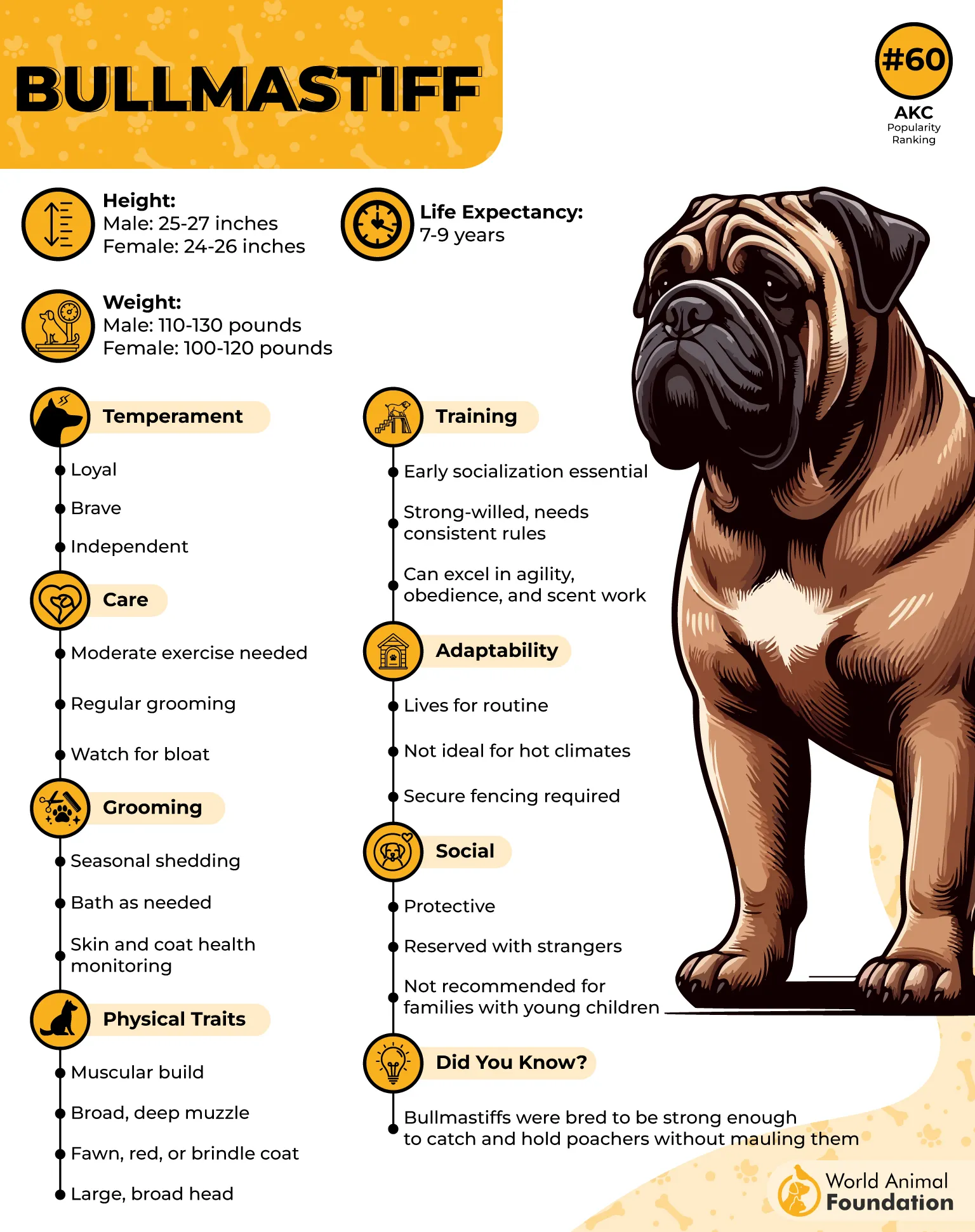
Bullmastiffs respond well to consistent, early training. They are intelligent and eager to work, but they need structure from the beginning to prevent stubborn habits from forming.
The coat is short and dense, usually fawn, red, or brindle. It sheds moderately and is easy to keep clean with a weekly brushing.
A large frame—often over 120 pounds—gives them the power to block space effectively, which is exactly what they were bred to do.
Fun Fact
Bullmastiffs were once called the “Gamekeeper’s Night Dog” because of their role in silently detaining poachers on English estates.
5. Doberman Pinscher
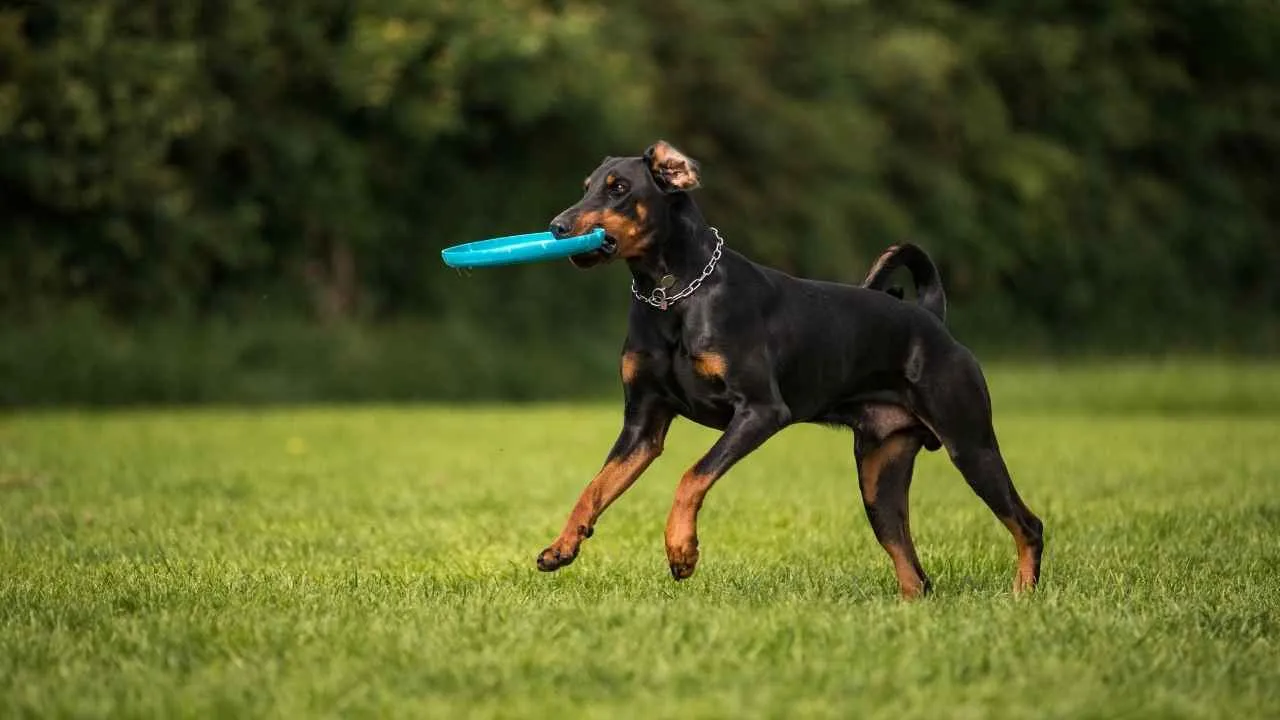
The Doberman Pinscher was created in Germany in the late 1800s by Karl Friedrich Louis Dobermann, who wanted a protective companion for his work as a tax collector. He combined several breeds to produce a dog that was alert, loyal, and athletic.
Dobermans are extremely aware of their surroundings. They tend to stay close to their owners, quickly moving between them and anyone approaching a car, home, or gate.
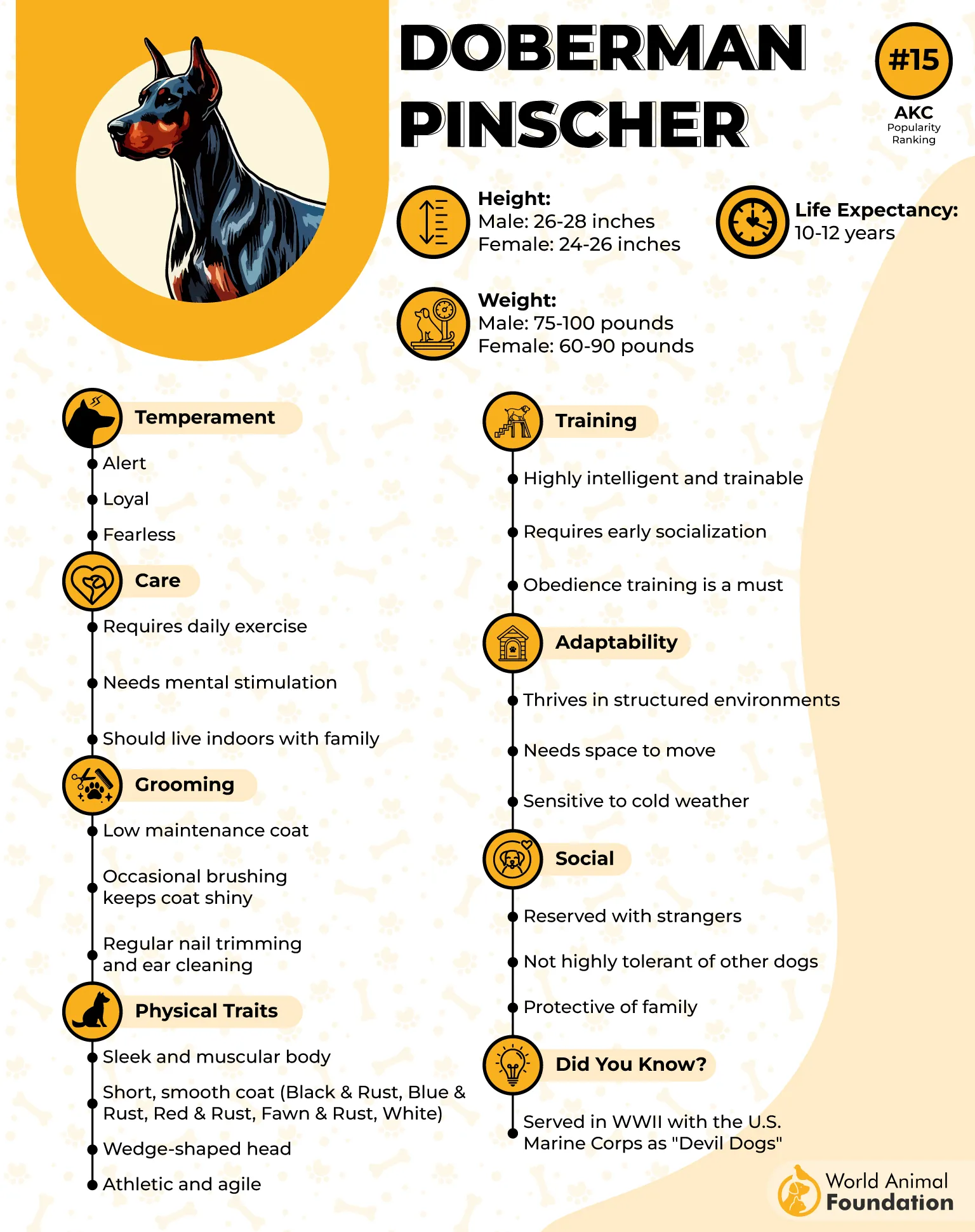
Training comes naturally to this breed. They learn quickly and respond to clear, firm guidance, but their intelligence means they also need mental stimulation to stay engaged.
Their coat is short, smooth, and low‑maintenance, usually black, blue, red, or fawn with rust markings. A light brushing once a week keeps their coat healthy.
Tall and lean with a confident posture, they have the kind of presence that makes people stop before they get too close.
Fun Fact
Dobermans served as official messenger dogs for the U.S. Marine Corps during World War II, valued for their speed and courage.
6. Boxer
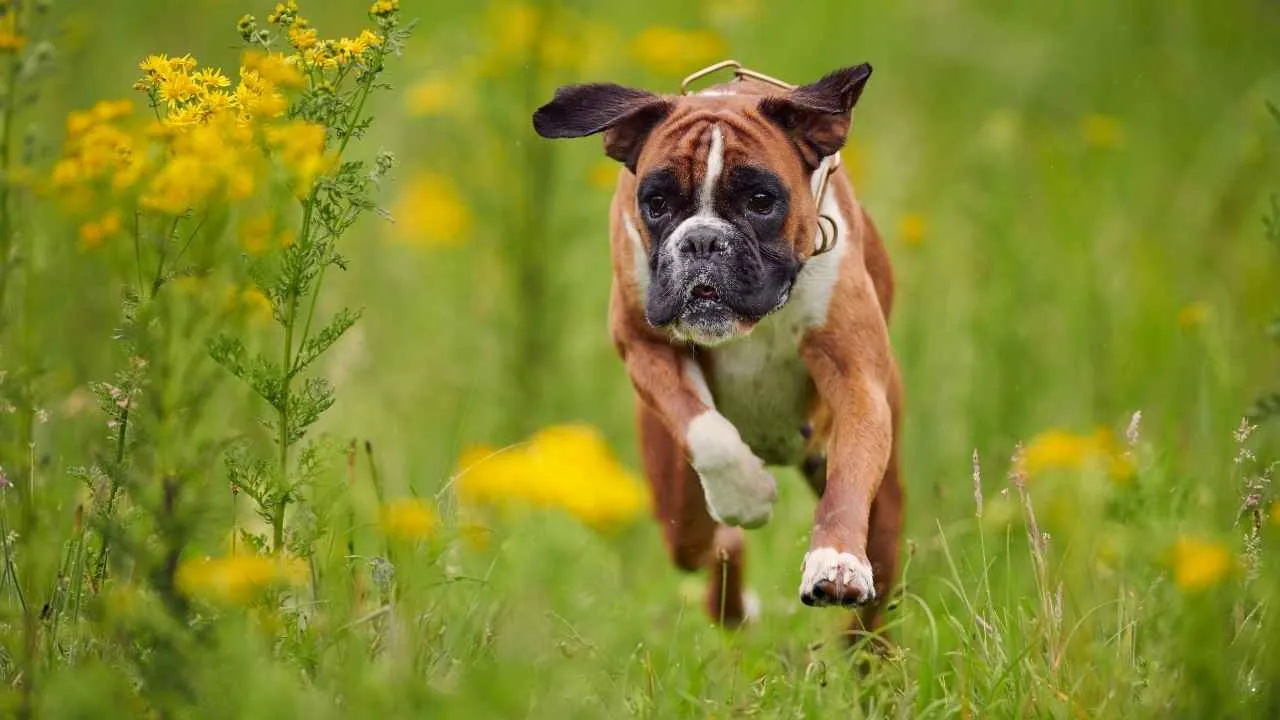
The Boxer originated in Germany in the 19th century, descending from the Bullenbeisser, a hunting dog used for boar and deer. Breeders shaped it into a more versatile companion, known for its strength and loyalty.
Boxers are alert and attentive. They tend to stand between their families and anyone approaching, often using their body language before they resort to barking.
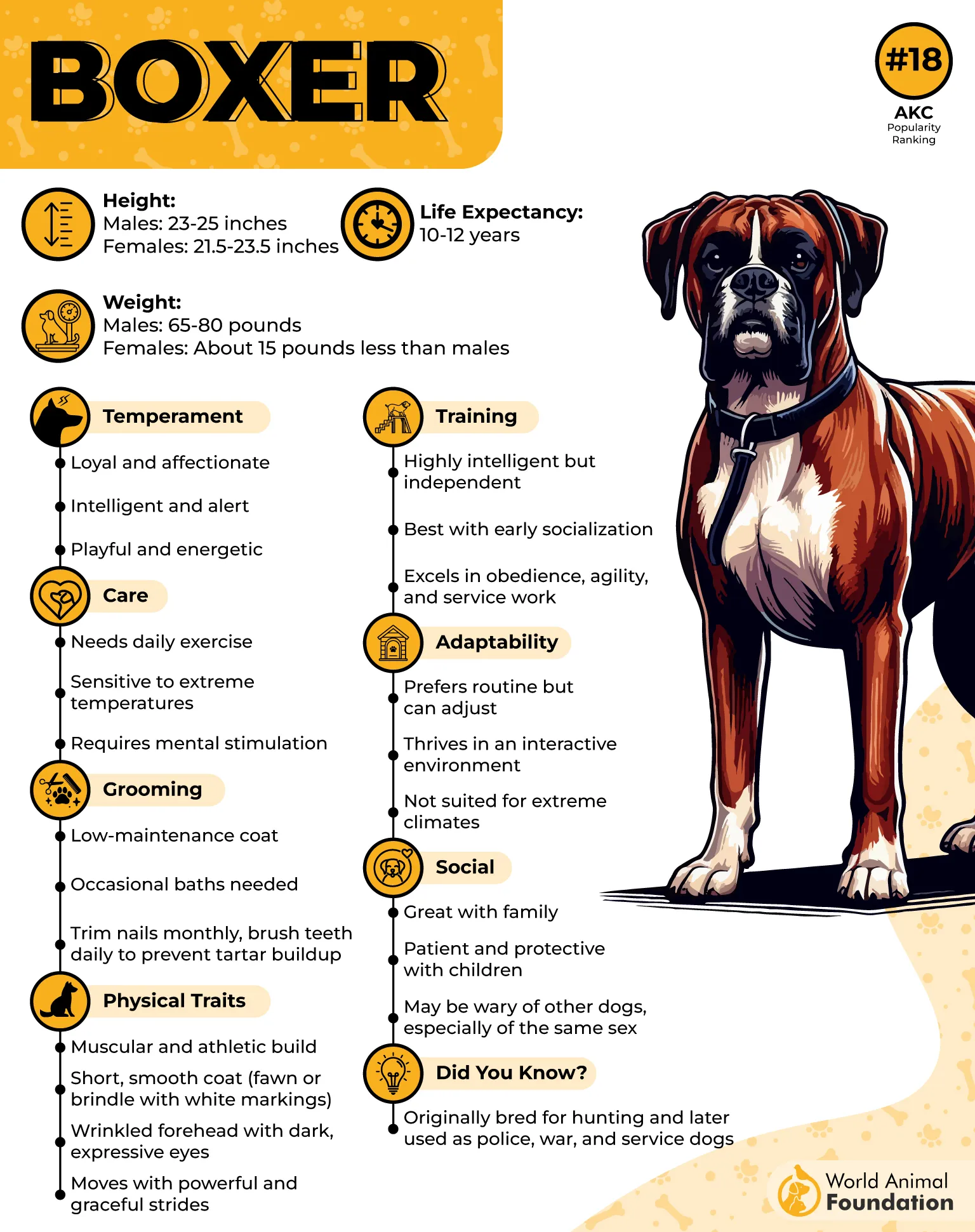
They are energetic and thrive on structured training. Boxers do best with positive methods that keep them engaged, since they can become stubborn if bored.
Their coat is short and smooth, usually fawn or brindle with a white chest and markings. It sheds lightly and only needs an occasional brushing.
Muscular but agile, they combine a protective instinct with an athletic build that allows them to react quickly.
Fun Fact
Boxers earned their name from their tendency to “box” with their front paws during play and training.
7. Akita
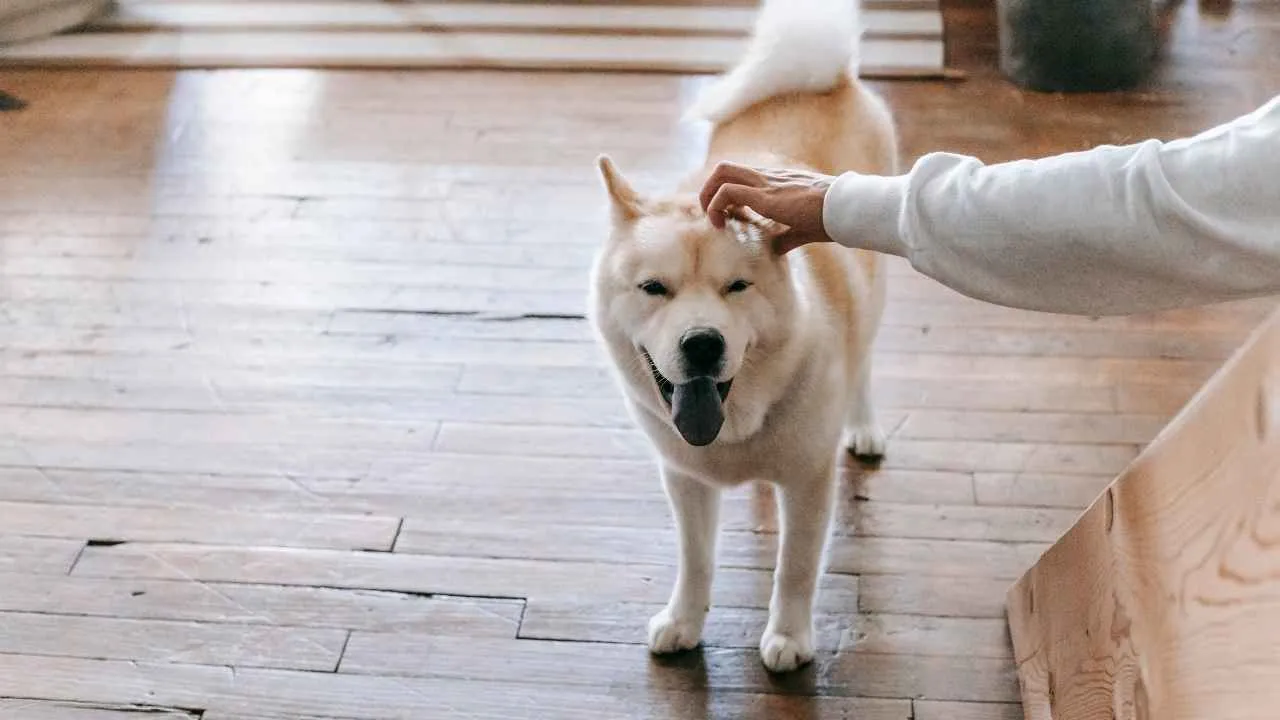
The Akita originated in northern Japan, where it was bred for guarding and hunting. It was valued for its ability to protect homes and even royal households, a role that shaped its strong sense of vigilance.
Akitas are naturally watchful and tend to stand between their owners and anyone who approaches too closely. They do this quietly, relying on their size and steady presence rather than constant barking.
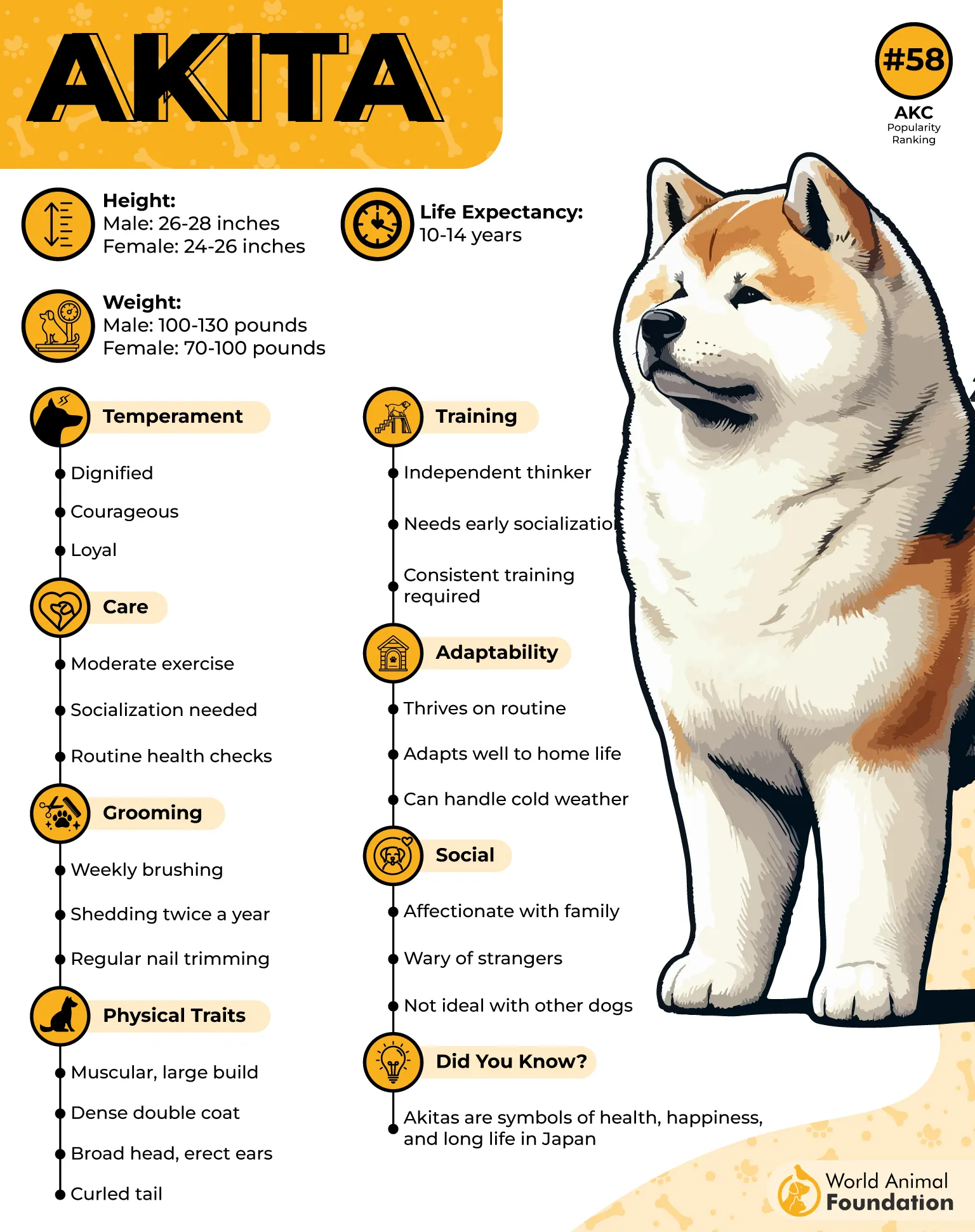
Training requires consistency and patience. They are intelligent but can be independent, so early socialization and clear boundaries are important.
The coat is thick and double‑layered, designed for cold weather. It sheds heavily during seasonal changes, which means regular brushing is essential.
Their sturdy build and upright stance create an immediate impression, and most strangers think twice before getting too close.
Fun Fact
In Japan, Akitas are considered a symbol of loyalty and protection, and statues of the breed are often given as gifts for good health and good fortune.
8. Belgian Malinois
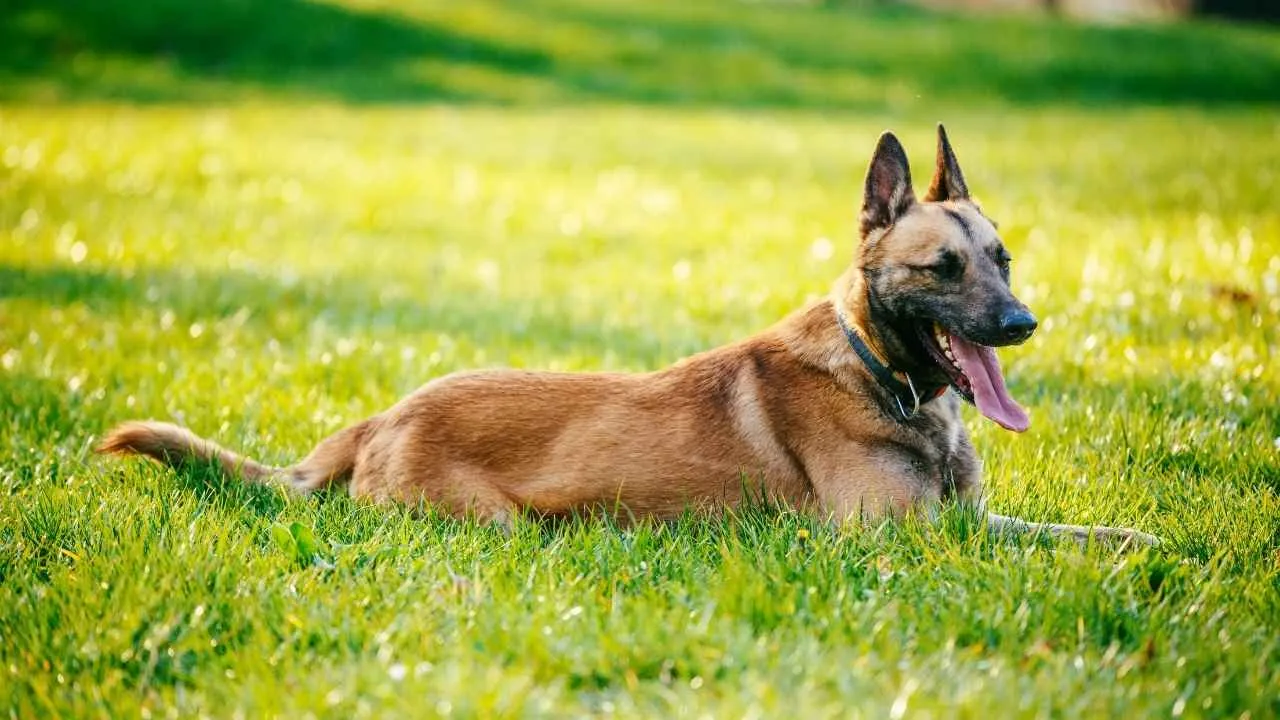
The Belgian Malinois was developed in Belgium as a herding dog but quickly became known for its drive and trainability. Those traits led to its use in military and police work around the world.
Malinois are constantly alert and quick to respond. They don’t hesitate to block an approach or move between their handler and a perceived threat.
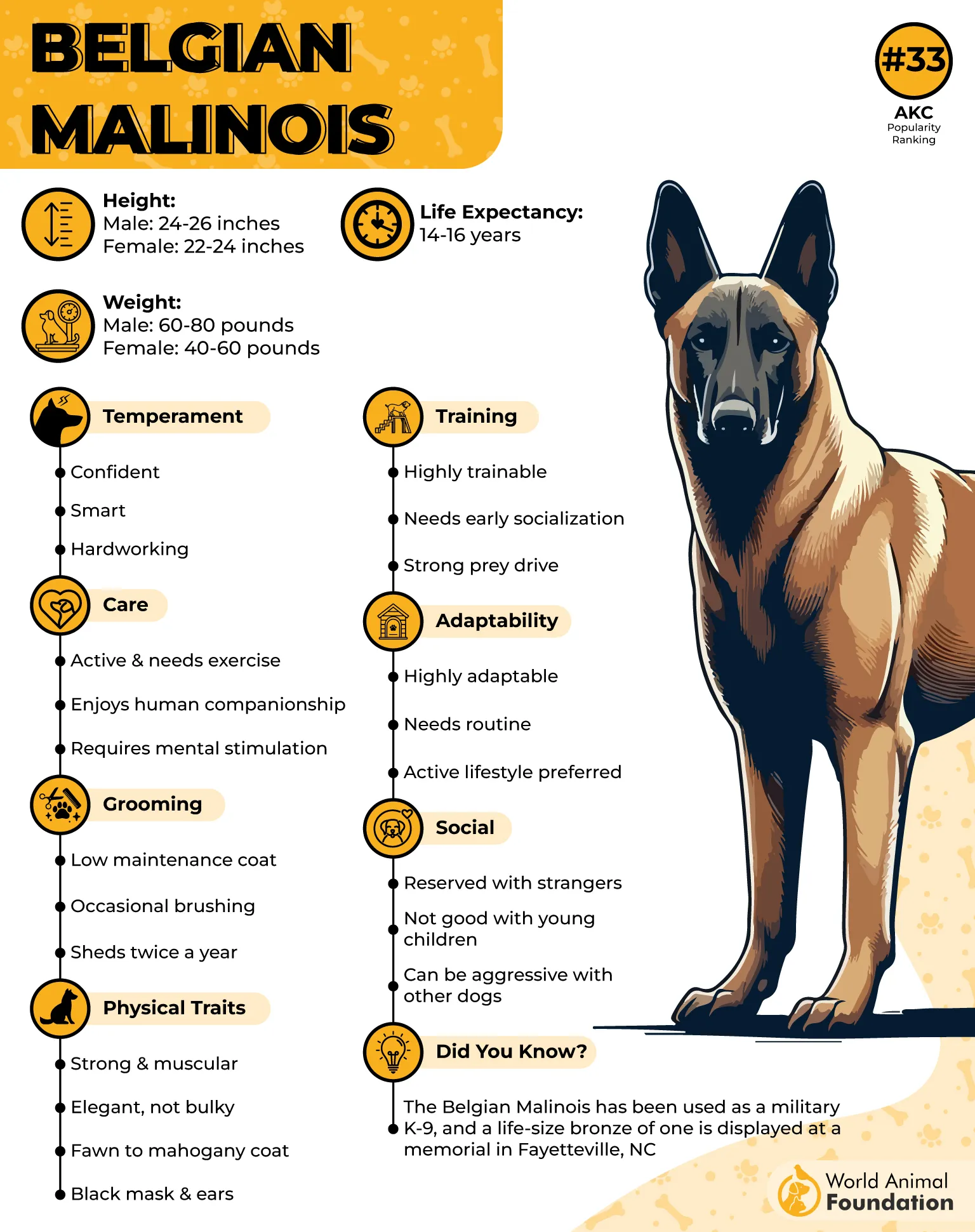
PetMD states that they excel in training environments that are structured and challenging. Their intelligence means they pick up commands quickly, but they also need daily tasks to stay focused.
The coat is short and weather‑resistant, usually fawn with a black mask. Grooming is simple, but they shed steadily throughout the year.
Their lean, athletic frame and sharp focus make them highly effective working dogs in both rural and urban settings.
Fun Fact
Belgian Malinois are used by elite military units, including Navy SEALs, and were part of the mission that located Osama bin Laden.
9. Rhodesian Ridgeback
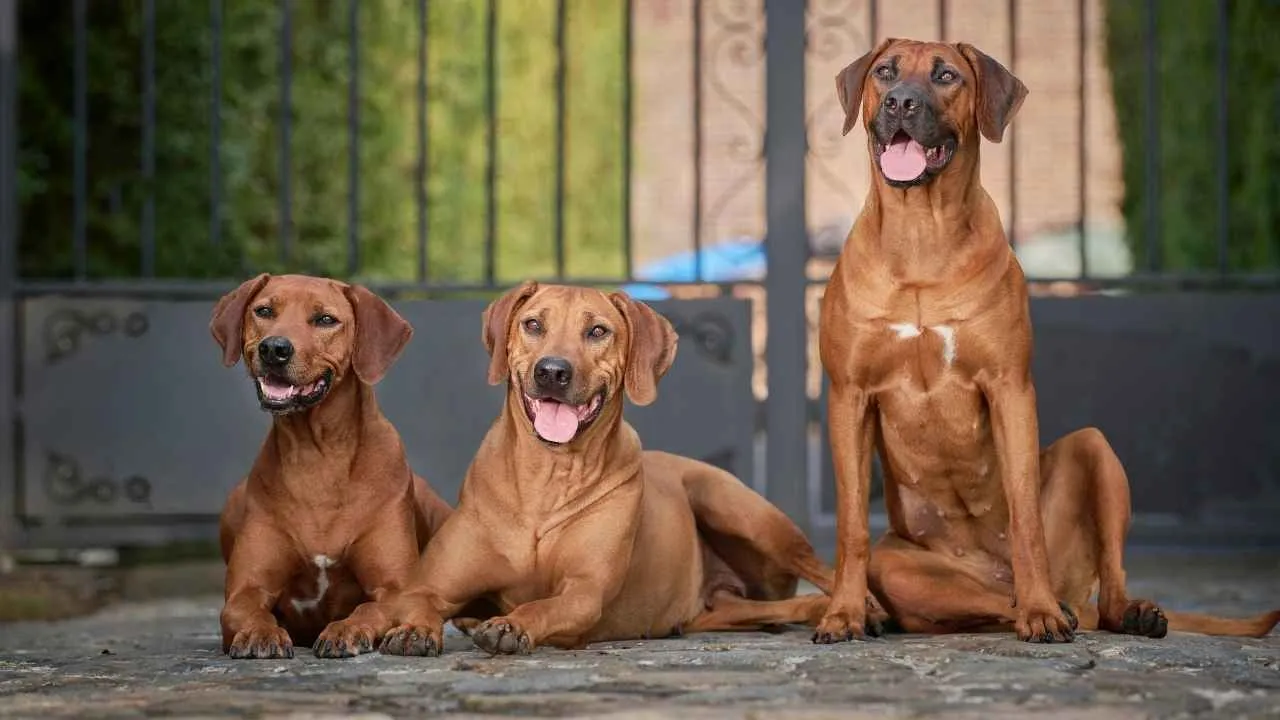
The Rhodesian Ridgeback was bred in southern Africa to track and corner lions, as well as guard farms and homesteads. Its background as a hunter and protector still defines the breed’s instincts.
They are naturally reserved with strangers. A Ridgeback will often step between its owner and someone unfamiliar, showing quiet vigilance rather than overt aggression.
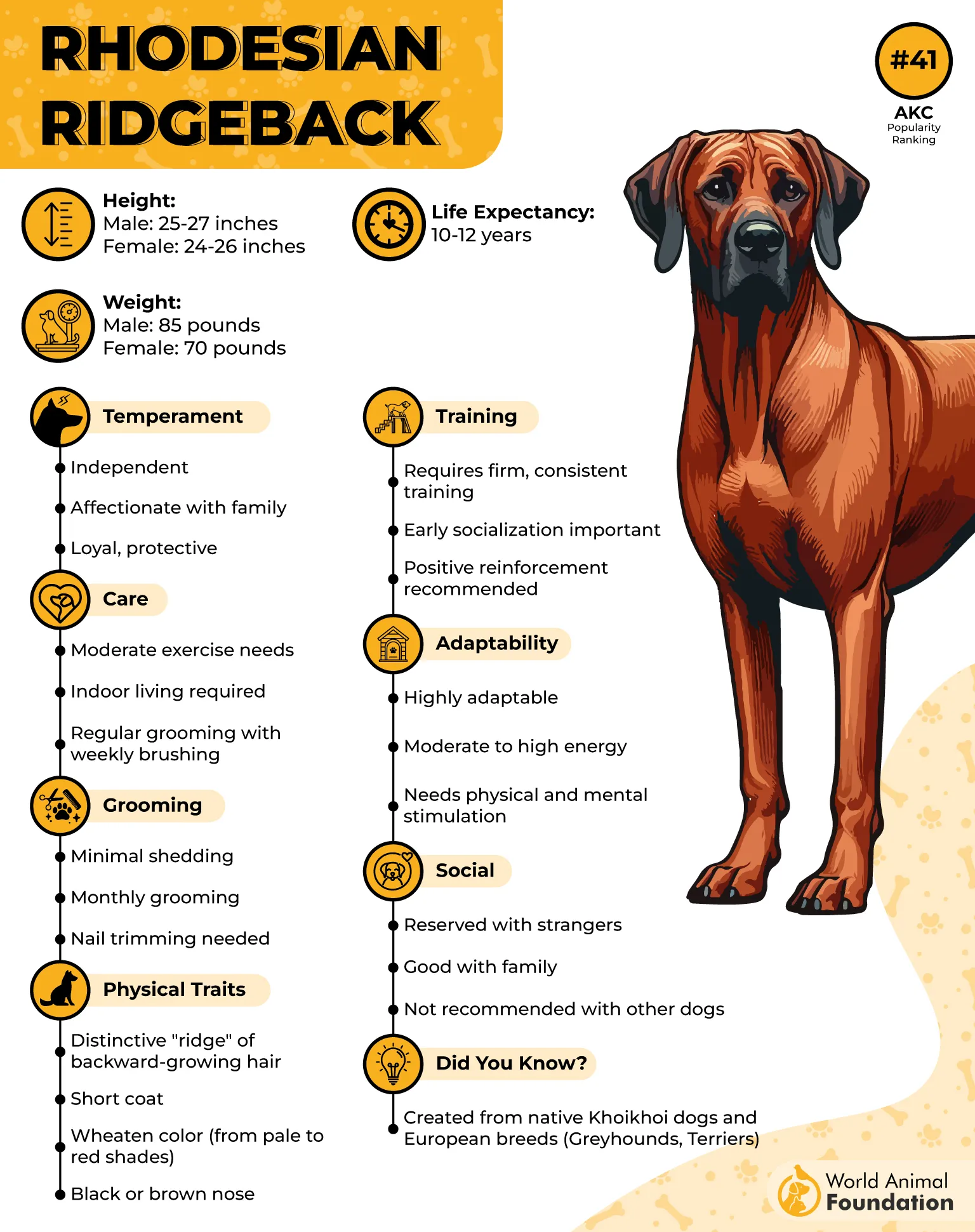
Training is important because of their independence. They respond best to calm, consistent guidance and benefit from early exposure to different people and places.
The coat is short, sleek, and low‑maintenance. The “ridge” along their back—hair growing in the opposite direction—is the breed’s hallmark feature.
Their combination of strength and composure makes them effective natural guardians without excessive force.
Fun Fact
The Rhodesian Ridgeback’s trademark ridge of hair along its spine comes from early crosses with native African dogs that carried the trait.
Conclusion
Protective dogs play an important role in keeping homes, cars, and family members safe. Some of these dogs come from reputable breeders, while others are also rescues, carrying a past that shaped how they respond to unfamiliar people and animals. Large dogs with a herding instinct or strong protective tendencies often react aggressively when they feel unsafe, but that reaction is often based on fear rather than intent to hurt.
Training makes the difference. Puppies and young dogs learn quickly, but even an older or anxious dog can improve with calm guidance. Leash work, treats, and gentle behavior modification help a reactive dog develop better control. Harsh tools like shock collars and prong collars can create more anxiety, while steady routines and positive reinforcement build trust.
Most people see a dog growling at the front door or by a car and assume aggression. In many cases, the dog is scared or unsure. With the right training and care, even a rescue with a hard time adjusting can feel safe enough to be a reliable friend and loyal family pet.


